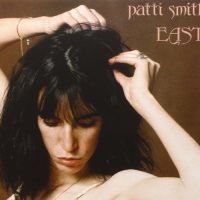I had difficulty coming to terms with Wish. Released on April 21, 1992, this LP felt like a return to form for the Cure, “like throwing arms ’round yesterday,” as Robert Smith sang here on “A Letter to Elise.”
It just wasn’t the form I particularly wanted.
In fact, the similarities with the Cure’s Kiss Me, Kiss Me, Kiss Me are striking, right down to the swooping opening track and the one or two icky-sticky radio-ready tunes. That 1987 release was as popular with a broader audience as it had been scattershot and essentially unsatisfying to me.
I was far more interested in its follow up, the brilliant and darkly consistent Disintegration from 1989. Then described as the Cure’s last album, it was a monsoon of pouting – and the kind of textured masterwork so interesting since it seemed to be produced by someone trying to get through something. It was, as the decade’s neon-lit promise receded, a depressing album for a depressing age. I loved it.
By way of contrast, the Cure’s occasionally frivolous Wish found Robert Smith doing something called “the unstuck.” More like “the uninspired,” I grumbled. This album, which arrived on the heels of 1990’s Mixed Up – a collection of singles handed over to various producers to be fiddled with – seemed to confirm for me the end of the Cure’s creative era.
Smith, in later interviews, said he had done Mixed Up simply to yank chains. A house mix? Consider mine yanked, I grumbled.
I was certain, back then, that the Cure’s Wish had backed out of every promise made by Disintegration, or even Mixed Up for that matter. It neither explored songs as canvases, nor overtly challenged the group’s core fanbase.
Time, however, has been surprisingly kind to Wish. What it did, instead, (and it’s no small thing, really) was rock.
The Cure finally – finally – split with slowly fading founding member Laurence Tolhurst, who had been relegated to “other instruments” on Disintegration. Added was former Cure roadie Perry Bamonte and, evidently, the kid liked to play. Almost every track on Wish had a guitar for its spine. That’s helped this album age surprisingly well. Where Disintegration shimmered, Wish screeched – and that doesn’t seem like such a bad thing anymore.
In the determinedly un-depressing age that followed my post-college years, albums with more layered complexities than the downer classic Disintegration – albums like Wish and, yes, Kiss Me, Kiss Me, Kiss Me – have concurrently risen in my estimation. I shouldn’t have been so hard on Wish, it’s clear. Though I still playlist around that silly unstuck business.
- The Bright Spots in George Harrison’s Troubled ‘Dark Horse’ Era - December 29, 2024
- The Pink Floyd Deep Cut That Perfectly Encapsulates ‘The Wall’ - November 29, 2024
- Why Pink Floyd’s ‘The Endless River’ Provided a Perfect Ending - November 11, 2024




I wholeheartedly agree with the article, and I have my own theory about it. I think Wish started out as a much darker album. On the 1991 vhs release Play Out, the first song presented is The Big Hand, bside to A Letter to Elise. It also appears in instrumental form as the outro to 1991’s Picture Show VHS. It was an important song at the time, in fact it was supposed to be released as a single. But according to Letter to Elise’s Wikipedia page it was drummer Boris Williams’ influence that blocked that decision and kept it from appearing on Wish at all. If you look at the album art , Big Hands dominate the imagery. And Big Hand can’t be the only song kept off the album in order to create a more commercial sounding record. B-sides from 1991-92 era are dark, well-crafted, and far better than some of the sappy/happy pop songs that seem obviously tacked onto Wish.
But we don’t have to leave it at that. These better songs are completely available to someone who wants to hear them. I have resequenced my own version of Wish, and if you listen to it this way, you can totally have the dark followup to Disintegration
Side A: 1) a foolish arrangement 2) A letter to Elise 3) this twilight garden 4) the big hand 5)Cut
Side B: 1) from the edge of the deep green sea 2) apart 3) play 4) end
This album is far more cohesive and I think it’s how Smith might have intended it without commercial pressures. I think it has a lot more impact than the actual release and would have created a much better legacy for the band as years progressed. Maybe they would have avoided the malady of “next hit syndrome” that made Wild Mood Swings the mess that it was and kept the mopey Bloodflowers from being too little too late.
Great points. And I’ll be building that playlist shortly! Thanks.